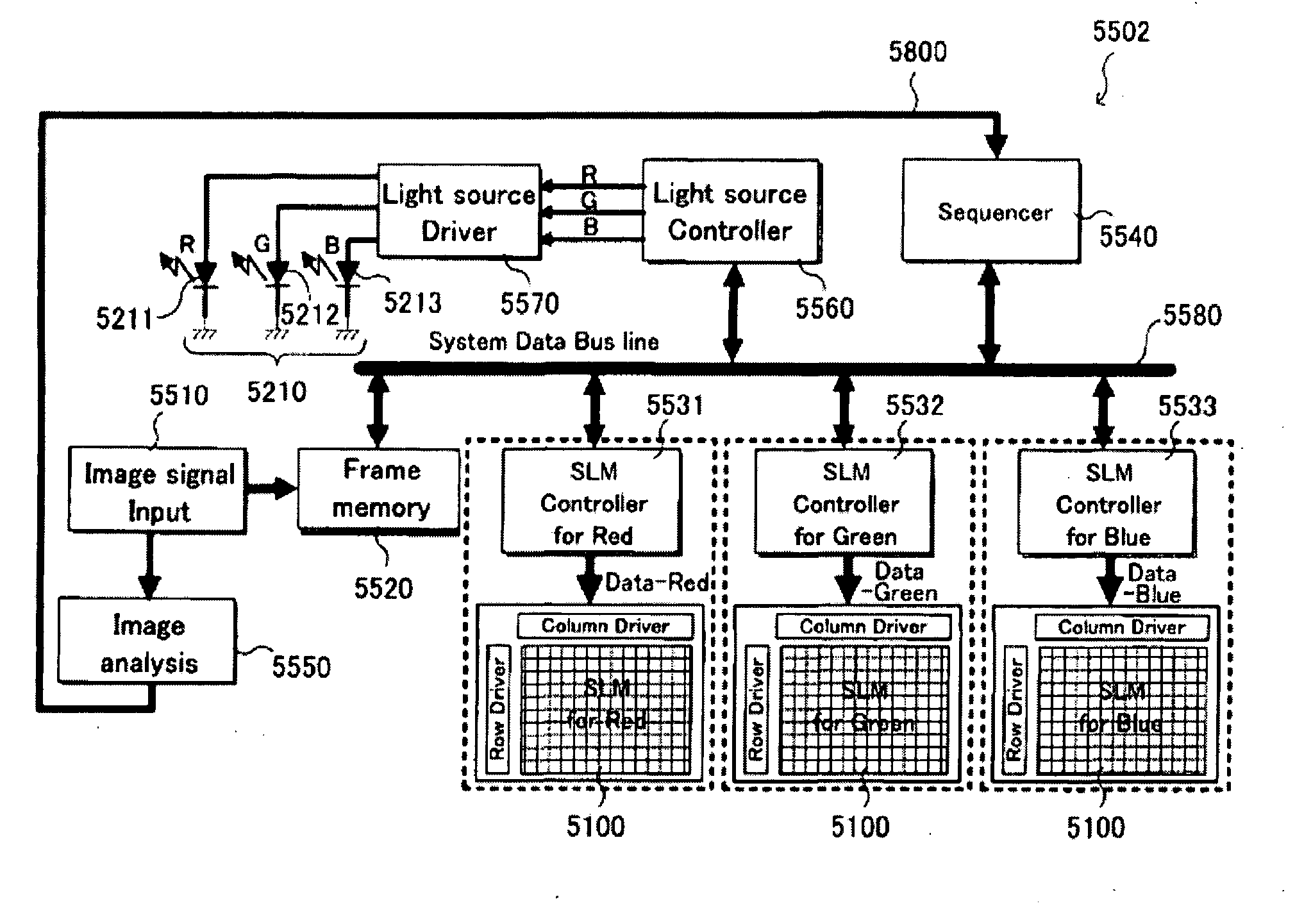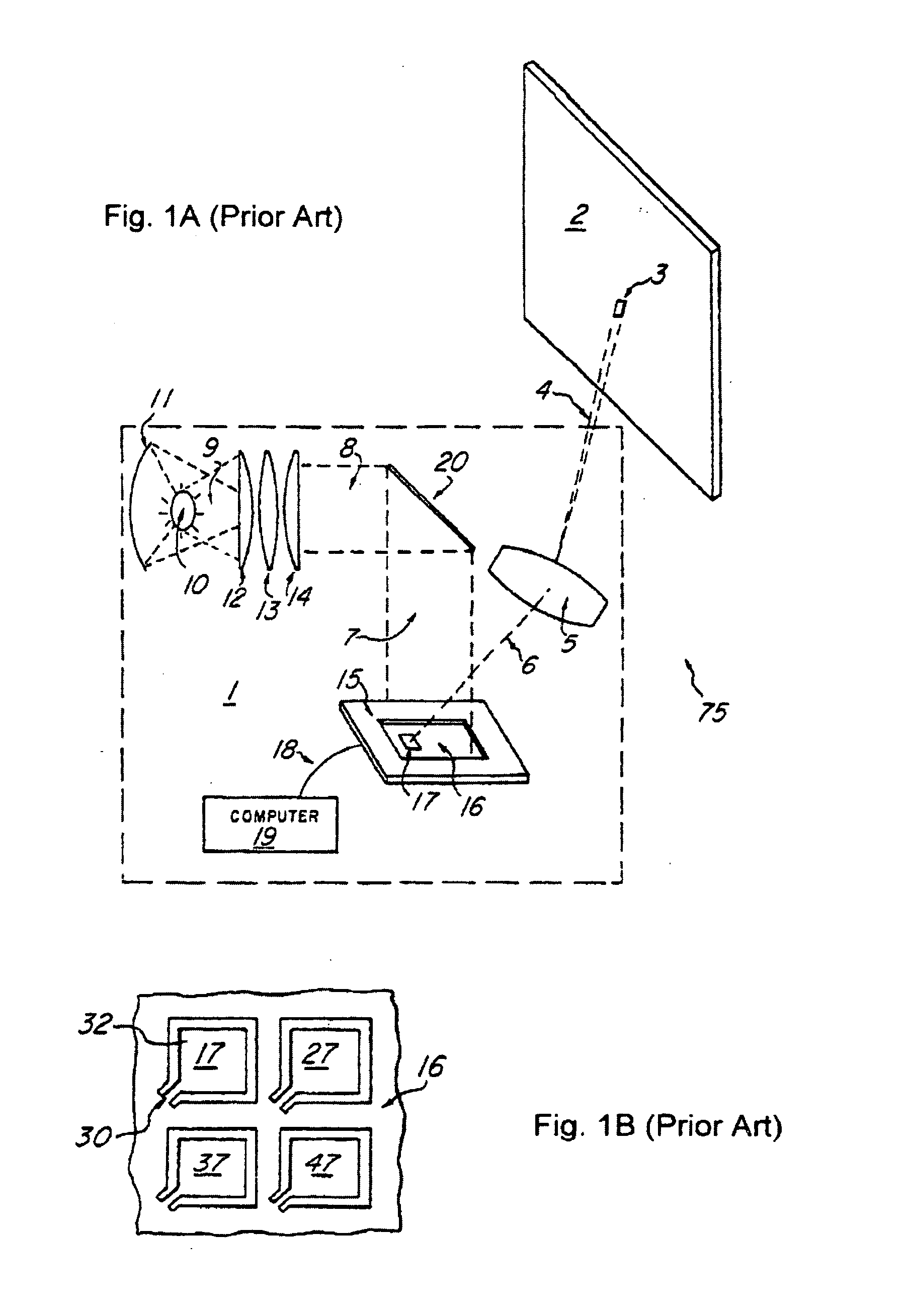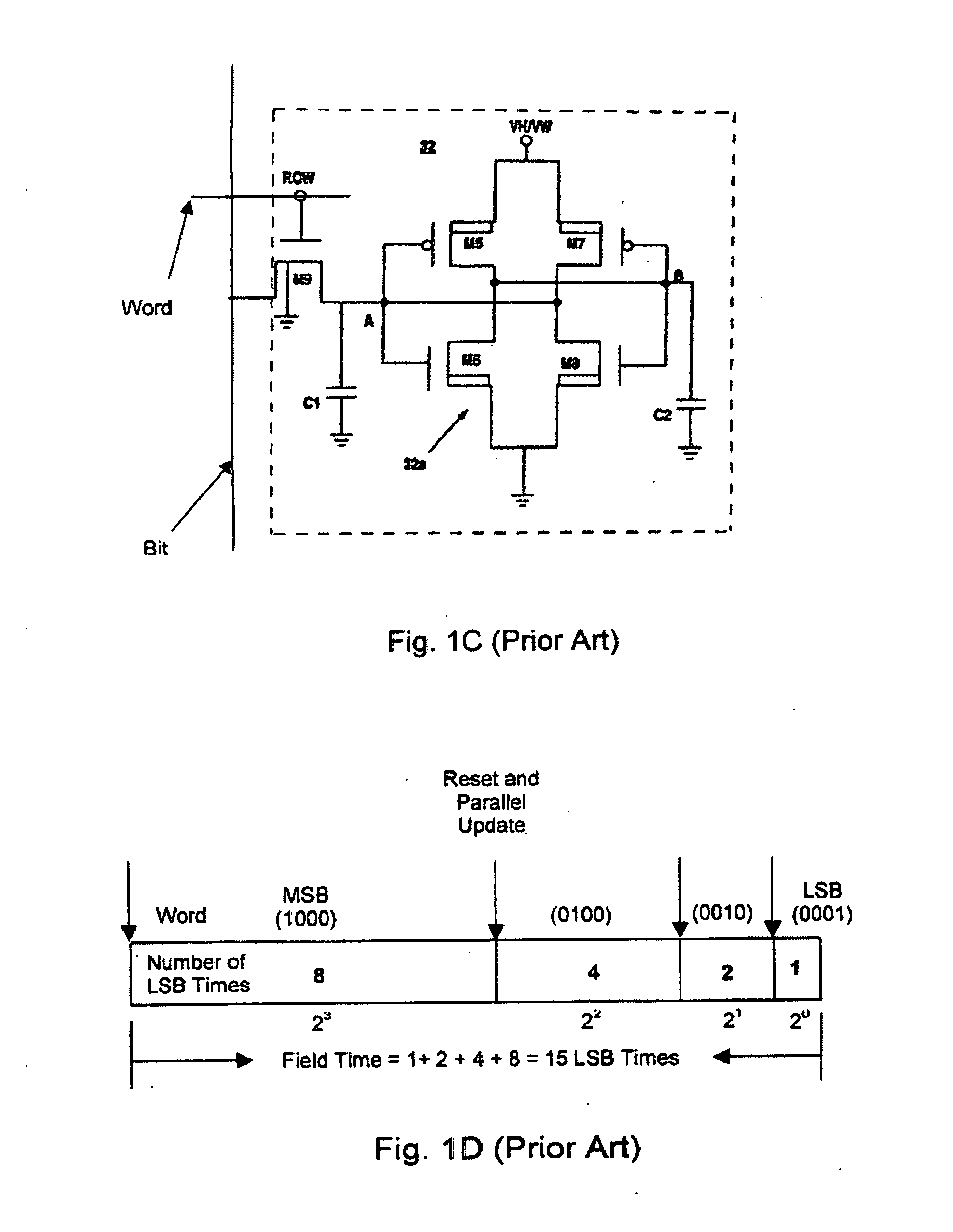Display system for higher grayscale with a varying light source
a technology of light source and display system, applied in the field of image display system, can solve the problems of most conventional display system, limited and difficult, adverse effects on image quality, etc., and achieve the effect of improving configuration and control methods, without cost penalty, and sacrificing brightness
- Summary
- Abstract
- Description
- Claims
- Application Information
AI Technical Summary
Benefits of technology
Problems solved by technology
Method used
Image
Examples
Embodiment Construction
[0071]Reference is now made to the above listed Figures for the purpose of describing, in detail, the preferred embodiments of the present invention. The Figures referred to and the accompanying descriptions are provided only as examples of the invention and are not intended in anyway to limit the scope of the claims appended to the detailed description of the embodiment.
Outline of Projection Display System
[0072]The following detail description is provided for an exemplary embodiment of the present invention by referring to the accompanying drawings.
[0073]FIG. 6 is a functional block diagram for showing the configuration of a projection apparatus according to a preferred embodiment of the present invention.
[0074]FIG. 6 shows a projection apparatus 5010 according to the present embodiment comprises a single spatial light modulator (SLM) 5100, a control unit 5500, a Total Internal Reflection (TIR) prism 5300, a projection optical system 5400, and a light source optical system 5200.
[00...
PUM
 Login to View More
Login to View More Abstract
Description
Claims
Application Information
 Login to View More
Login to View More - R&D
- Intellectual Property
- Life Sciences
- Materials
- Tech Scout
- Unparalleled Data Quality
- Higher Quality Content
- 60% Fewer Hallucinations
Browse by: Latest US Patents, China's latest patents, Technical Efficacy Thesaurus, Application Domain, Technology Topic, Popular Technical Reports.
© 2025 PatSnap. All rights reserved.Legal|Privacy policy|Modern Slavery Act Transparency Statement|Sitemap|About US| Contact US: help@patsnap.com



